

Here are some observations made October 5, 1997 at Ron Abbott's private observing site in Linn County, KS. This is a very dark site about 50 miles south of Kansas City. I was observing primarily with my 13.1" F4.5 Coulter Odyssey II dobsonian and occasionally with my 10" F5 homemade Dobsonian. Ron uses a Celestron Ultima 11".
The photos shown with the observing notes below are actually downloaded from
The STScl Digitized Sky Survey and are not ones I took unless so designated. The name of the object is followed by its magnitude estimate, size, description and RA and DEC coordinates.

Started out observing the moon and Venus through the 10"F5 and then
looked at Jupiter. One of the Jovian moons was transiting at 0000UT
and itís shadow was centered on Jupiter. Then a little later about
0035UT the planet emerged from the Jupiter background opposite the
other three moons. I guessed it was Io and I confirmed this the
next day by looking in Astromy magazine. On Sunday night there will
be a double transit of Ganymede and Europa.

While it was getting dark I decided to do some observing in the Sagittarius Milky Way region.
Globulars observed with 10"F5
NGC6441 - right next to G-Sco a reddish star.
M54, M70, M69 in the base of the teapot. These three are quite large
and bright.
M22, NGC 6569, 6624, 6522,6528, these last 2 in the same field with
Gamma & W Sag
Used 13.1"F4.5 to observe M31,M32, and M110, then looked at M11.

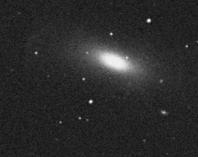
Next observed NGC7600 in Aquarius using 13.1"F5 - long oval with
no central condensation. L shaped group of stars in the same field
at 60X.
Then observed NGC 7619 and 7626 in the same 60X field of the
13.1"F5. These two galaxies are both somewhat elliptical and
form an equilateral triangle with a field star. Both have bright
cores. 7619 is an E type 2.8 x 2.5 mag 11.1 ; 7626 is E pec:
2.4 x 1.9 mag 12.6. These two are in a group of about 10 galaxies
and most are 13 and 14 mag.


Ron Abbott then showed me NGC 7469 in his scope using the 16mm
eyepiece. Star superimposed over galaxy center. 1.5í x 1.0í
mag 12.6 (Rí)SAB(rs)a, bright nucleus and detached arms.
Did not see IC5283 right next to it.
Then using my 13" observed NGC 7742 very faint oval shaped with
uniform brightness in a row with 3 stars. Mag 11.6 2.0 x 1.8
SA( r )b


Next Ron showed me NGC 7537 and 7541 in his scope.
7537 appears long and narrow and 7541 is small and circular.
7537 is mag 13.2 1.9x0.5 Sabc: and 7541 is mag 11.7
3.1x1.0 SB(rs)bc:pec II Photo courtesy of STScl Digitized Sky Survey.
NGC 7492 in 13" F4.5 with 25mm is a diffuse globular next to a
triangle of stars. Very diffuse. Mag 11.4
Then using 13" F4.5 observed NGC 7585 and 7576 at 60X in same
field. 7585 is mag 11.4 3.0x2.6 SA?0 pec and 7576 is mag 12.9
1.5x1.1 (Rí)SA?0: 7585 is also Arp 223 which I have seen before.
Next observed NGC 246 planetary nebula in Cetus.
Several superimposed stars on the nebula one of
which was the central star of the nebula. Used OIII
filter and nebula really bloomed out several times
larger 225" mag 11 Photo courtesy of STScl Digital Sky Survey.
Then observed NGC253 very good tonight dust lanes very
prominant. What a huge galaxy. This SAB(s)c: II galaxy
is oriented similar to M31. It is 30.0í x 6.9í and mag
7.6
Then observed NGC 288 big and misty globular cluster
mag 8.1 13.8í later in Ronís scope he magnified the image
and we could see the individual stars.
Next Ron showed me IC10, a galaxy in our local group, close to
Beta Cassiopeia. Very diffuse and large. Mag 11.3 7.3x6.4
Photo courtesy of STScl Digital Sky Survey.
Next Ron showed me NGC 129 and open cluster near IC10
V-shaped cluster of few stars. Next Ron turned to NGC 7640 in Andromeda an edge on galaxy in a triangle
of stars mag11.3 10x2.2 SB(s)c II Gorgeous!!!! See picture
of this one here. NGC 7785 in Pisces was Ronís next target somewhat edge
on in a triangle of stars bright core. This is an E5-6 mag 11.6
NGC 891 looked good directly overhead in the 13" and so did the
Veil Nebula with the UHC filter. M57 was good too and M33 was
very fine.
Ron then looked at NGC 150 in Sculpter. This was an oblong
galaxy. Mag 11.3 3.4x1.6SA(s)b? I-II
Ron then showed me G76 in Andromeda. This is a globular in another galaxy.
I then used the 13" to look at M77 and NGC 1055 in the same field in Cetus
Next I looked at NGC 681 in Cetus in the same field with Chi Ceti.
This galaxy looks like a smaller version of M104.
Mag 12 3x1.8 SA:a sp
I then looked at NGC 701 in Cetus. Mag 12.2 2.5x1.5 SB(s)cd III
Did not see companion.
Next looked at NGC 584 and 596 in same field both round and
bright. Then 615 and 636 all four in a row.
Ron then showed me NGC 271 next to a bright star in his scope.
Faint smug no central density.
Next I used the 13" to look at NGC 1325 an edge on looked
like a barred spiral in the scope. Is described as SB(rs)bc: II
Next looked at a pair of galaxies NGC 1300 and 1297, one
much brighter than the other.
NGC 1300 is Mag 10.4 5.5x2.9 and a classic barred spiral
described as SB(s)bc I and 1297 is Mag 12.0 2.2x1.9

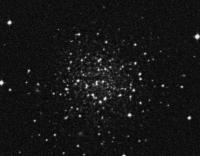

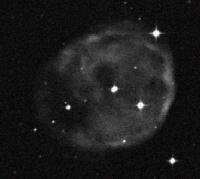

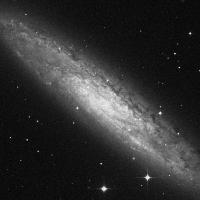



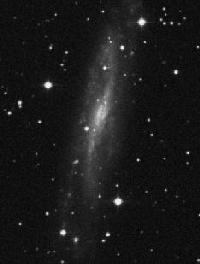


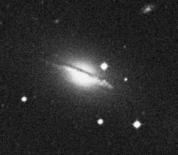

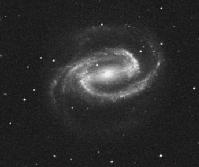

Return to Main Page